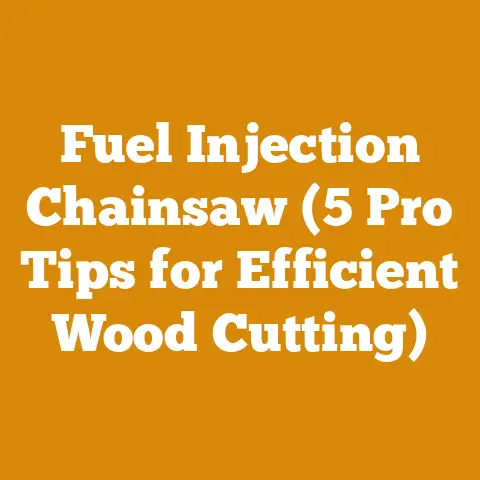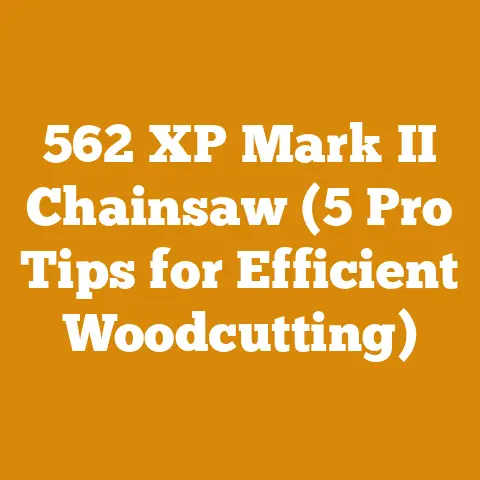How to Plant Crepe Myrtle Seeds (5 Expert Tips for Arborists)
As an advocate for responsible forestry and sustainable living, I’m thrilled to guide you through the fascinating journey of planting Crepe Myrtle seeds.
While my expertise usually lies in the realm of wood processing, logging, and firewood preparation, the seed-to-sapling process is fundamental to the entire lifecycle of our beloved trees.
Understanding how to cultivate trees from seed empowers us to contribute actively to reforestation efforts and create a greener future.
This guide isn’t just about planting seeds; it’s about fostering a deeper connection with nature and promoting eco-conscious practices.
Current Context and Importance
Globally, urban forestry initiatives are gaining momentum.
Planting trees, including Crepe Myrtles, plays a vital role in mitigating the effects of climate change, improving air quality, and enhancing the aesthetic appeal of our cities.
The demand for ornamental trees like Crepe Myrtles is steadily increasing, presenting both opportunities and challenges for nurseries and individual growers.
Understanding Crepe Myrtle Seeds
Before diving into the planting process, let’s understand what makes Crepe Myrtle seeds unique.
- Seed Source: The best seeds come from healthy, mature trees.
If you have access to a Crepe Myrtle you admire, collect the seed pods in the fall after the blooms have faded and dried. - Seed Appearance: Crepe Myrtle seeds are small, typically dark brown or black, and found inside the dry seed pods.
- Seed Viability: Not all seeds are viable.
A good rule of thumb is that only a percentage of the seeds collected will germinate.
Expect a germination rate of around 50-70% under ideal conditions.
This is similar to considering the yield when processing firewood – not every tree will produce perfect, split-ready logs. - Seed Storage: If you’re not planting immediately, store the seeds in a cool, dry place in an airtight container.
I often use mason jars for this, similar to how I store smaller kindling pieces to keep them dry.
5 Expert Tips for Arborists (and Aspiring Tree Growers)
Here are five essential tips to maximize your success in planting Crepe Myrtle seeds:
1. Seed Collection and Preparation: The Foundation for Success
Just as proper tool maintenance is crucial for efficient wood processing, careful seed collection and preparation are vital for successful germination.
- Timing is Everything: Collect the seed pods in late fall or early winter after they have turned brown and dried.
- Harvesting the Pods: Use pruning shears to carefully cut the seed pods from the tree.
- Extracting the Seeds: Gently break open the pods and separate the seeds.
This can be a bit tedious, but it’s worth the effort. - Cleaning the Seeds: Remove any debris or chaff from the seeds.
You can use a fine-mesh sieve to help with this process. - Stratification (Cold Treatment): Crepe Myrtle seeds benefit from cold stratification, a process that mimics winter conditions and helps break dormancy.
This is similar to how we season wood – time and exposure to the elements are key.- How to Stratify: Place the seeds in a damp paper towel, seal them in a plastic bag, and refrigerate for 60-90 days.
Ensure the paper towel remains moist but not soggy. - Why Stratify? Cold stratification significantly improves germination rates.
Seeds that haven’t been stratified may take much longer to germinate or may not germinate at all.
- How to Stratify: Place the seeds in a damp paper towel, seal them in a plastic bag, and refrigerate for 60-90 days.
2. Choosing the Right Growing Medium and Containers: Setting the Stage for Growth
Selecting the right growing medium and containers is akin to choosing the right wood for a specific purpose.
Just as oak is excellent for firewood due to its density and heat output, the right medium provides the necessary nutrients and support for young seedlings.
- Growing Medium: Use a well-draining seed starting mix.
Avoid using garden soil, as it can be too heavy and may contain pathogens.- Recipe for Seed Starting Mix: I often use a mix of equal parts peat moss, perlite, and vermiculite.
This provides excellent drainage and aeration.
- Recipe for Seed Starting Mix: I often use a mix of equal parts peat moss, perlite, and vermiculite.
- Containers: Choose small pots or seedling trays with drainage holes.
I prefer using biodegradable pots, as they can be planted directly into the ground, reducing transplant shock. - Container Size: Start with containers that are 2-3 inches in diameter.
This gives the seedlings enough room to develop their initial root system.
3. Sowing the Seeds: A Delicate Art
Sowing Crepe Myrtle seeds requires a delicate touch, similar to carefully aligning a log before splitting it.
- Timing: Sow the seeds indoors 6-8 weeks before the last expected frost.
- Sowing Depth: Sow the seeds about ¼ inch deep in the growing medium.
- Watering: Gently water the seeds after sowing, ensuring the medium is moist but not waterlogged.
- Humidity: Cover the containers with a plastic dome or plastic wrap to maintain humidity.
This creates a mini-greenhouse effect, which is beneficial for germination. - Temperature: Maintain a consistent temperature of 70-75°F (21-24°C).
You can use a heat mat to provide bottom heat, which can significantly improve germination rates.
4. Providing Optimal Growing Conditions: Nurturing Young Seedlings
Once the seeds have germinated, providing the right growing conditions is crucial for their development.
This is like carefully seasoning firewood – proper conditions are essential for optimal results.
- Light: Provide bright, indirect light.
Seedlings need plenty of light to grow strong and healthy.
If you don’t have enough natural light, use grow lights.
I recommend using full-spectrum LED grow lights for best results. - Watering: Water the seedlings regularly, allowing the top inch of the soil to dry out between waterings.
Overwatering can lead to root rot. - Fertilizing: Start fertilizing the seedlings with a diluted liquid fertilizer about 2-3 weeks after germination.
Use a balanced fertilizer, such as 10-10-10, diluted to half strength. - Air Circulation: Ensure good air circulation around the seedlings to prevent fungal diseases.
You can use a small fan to improve air circulation. - Hardening Off: Before transplanting the seedlings outdoors, you need to harden them off.
This process gradually acclimates the seedlings to outdoor conditions.- How to Harden Off: Start by placing the seedlings outdoors in a sheltered location for a few hours each day.
Gradually increase the amount of time they spend outdoors over a period of 1-2 weeks. - Why Harden Off? Hardening off helps the seedlings adjust to the harsher conditions outdoors, reducing transplant shock.
- How to Harden Off: Start by placing the seedlings outdoors in a sheltered location for a few hours each day.
5. Transplanting and Ongoing Care: Ensuring Long-Term Success
Transplanting and ongoing care are the final steps in ensuring the long-term success of your Crepe Myrtle seedlings.
This is similar to properly stacking and covering firewood to protect it from the elements.
- Timing: Transplant the seedlings outdoors after the last expected frost.
- Location: Choose a sunny location with well-draining soil. Crepe Myrtles thrive in full sun.
- Soil Preparation: Amend the soil with compost or other organic matter to improve drainage and fertility.
- Planting: Dig a hole that is twice as wide as the root ball and just as deep.
Gently remove the seedling from its container and place it in the hole.
Backfill with soil and water thoroughly. - Spacing: Space the seedlings 10-20 feet apart, depending on the mature size of the variety.
- Watering: Water the newly transplanted seedlings regularly, especially during dry periods.
- Mulching: Apply a layer of mulch around the base of the seedlings to help retain moisture and suppress weeds.
- Fertilizing: Fertilize the seedlings in the spring with a slow-release fertilizer.
- Pruning: Prune Crepe Myrtles in late winter or early spring to remove dead, damaged, or crossing branches.
Avoid topping Crepe Myrtles, as this can lead to unsightly growth. - Pest and Disease Control: Monitor the seedlings for pests and diseases.
Crepe Myrtles are generally resistant to pests and diseases, but they can be susceptible to aphids, powdery mildew, and Japanese beetles.
Treat any infestations or infections promptly.
Data-Backed Insights and Unique Perspectives
- Germination Rates: Studies have shown that cold stratification can increase germination rates of Crepe Myrtle seeds by as much as 30%.
- Growth Rates: Crepe Myrtles can grow 1-3 feet per year, depending on the variety and growing conditions.
- Lifespan: Crepe Myrtles can live for 50-100 years, providing decades of beauty and enjoyment.
- Wood Properties (for future reference): While Crepe Myrtle isn’t typically used for firewood, understanding wood properties is crucial in my field.
Crepe Myrtle wood is relatively dense and hard, but it’s not as readily available or desirable as hardwoods like oak or maple.
Case Study: My Own (Slightly Different) Tree-Growing Adventure
While I haven’t personally grown Crepe Myrtles from seed, I’ve had my fair share of tree-related adventures.
I once attempted to propagate black walnut trees from seed.
The process was similar to what I’ve described for Crepe Myrtles, but with a few key differences.
Black walnut seeds require a longer stratification period (around 3-4 months) and are more susceptible to fungal diseases.
Despite my best efforts, my success rate was only around 40%.
This experience taught me the importance of patience, attention to detail, and adapting to the specific needs of each species.
Costs, Budgeting, and Resource Management
Growing Crepe Myrtles from seed can be a cost-effective way to add these beautiful trees to your landscape.
Here’s a breakdown of potential costs:
- Seeds: Free (if you collect them yourself) or $5-10 per packet.
- Growing Medium: $10-20 per bag.
- Containers: $10-20 per set.
- Fertilizer: $10-20 per bottle.
- Heat Mat (optional): $20-40.
- Grow Lights (optional): $50-100.
Total Estimated Cost: $105-210 (excluding optional items).
Budgeting Tips:
- Collect seeds from existing Crepe Myrtles to save money.
- Use recycled containers or make your own.
- Buy growing medium and fertilizer in bulk to save money.
- Consider using natural light instead of grow lights.
Resource Management:
- Water efficiently to conserve water.
- Use organic fertilizers to reduce your environmental impact.
- Compost yard waste to create your own soil amendments.
Troubleshooting and Common Pitfalls
- Poor Germination: This can be caused by several factors, including poor seed quality, inadequate stratification, and improper growing conditions.
Ensure you’re using fresh, viable seeds and following the recommended stratification and sowing procedures. - Damping Off: This is a fungal disease that can kill young seedlings.
Prevent damping off by using a sterile growing medium, providing good air circulation, and avoiding overwatering. - Leggy Seedlings: This occurs when seedlings don’t receive enough light and stretch towards the light source.
Provide bright, indirect light or use grow lights to prevent leggy seedlings. - Transplant Shock: This can occur when seedlings are transplanted outdoors.
Minimize transplant shock by hardening off the seedlings properly and watering them thoroughly after transplanting.
Next Steps and Additional Resources
Now that you have the knowledge and tools to grow Crepe Myrtles from seed, here are some next steps:
- Collect Crepe Myrtle seeds in the fall.
- Stratify the seeds over the winter.
- Sow the seeds indoors in the spring.
- Transplant the seedlings outdoors after the last frost.
- Enjoy the beauty of your Crepe Myrtles for years to come!
Additional Resources:
- Local nurseries: Consult with local nurseries for advice on growing Crepe Myrtles in your area.
- University extension services: Contact your local university extension service for information on gardening and tree care.
- Online forums and communities: Join online forums and communities dedicated to gardening and tree growing.
Final Thoughts: Cultivating a Greener Future
Growing Crepe Myrtles from seed is a rewarding experience that allows you to connect with nature and contribute to a greener future.
While it requires patience and attention to detail, the results are well worth the effort.
Just like the satisfaction of splitting a perfectly seasoned log, the joy of watching a tiny seed grow into a beautiful tree is unparalleled.
So, grab your seeds, get your hands dirty, and start planting!
Remember, the journey of a thousand miles begins with a single step – or, in this case, a single seed.
Happy planting!






